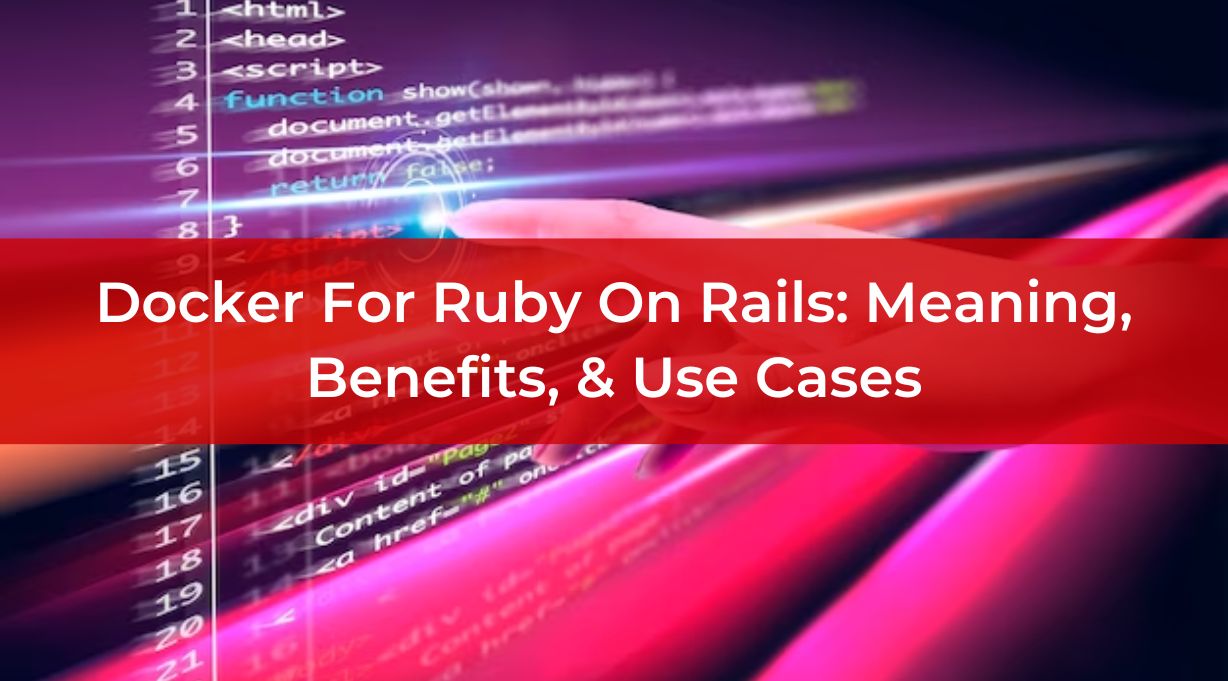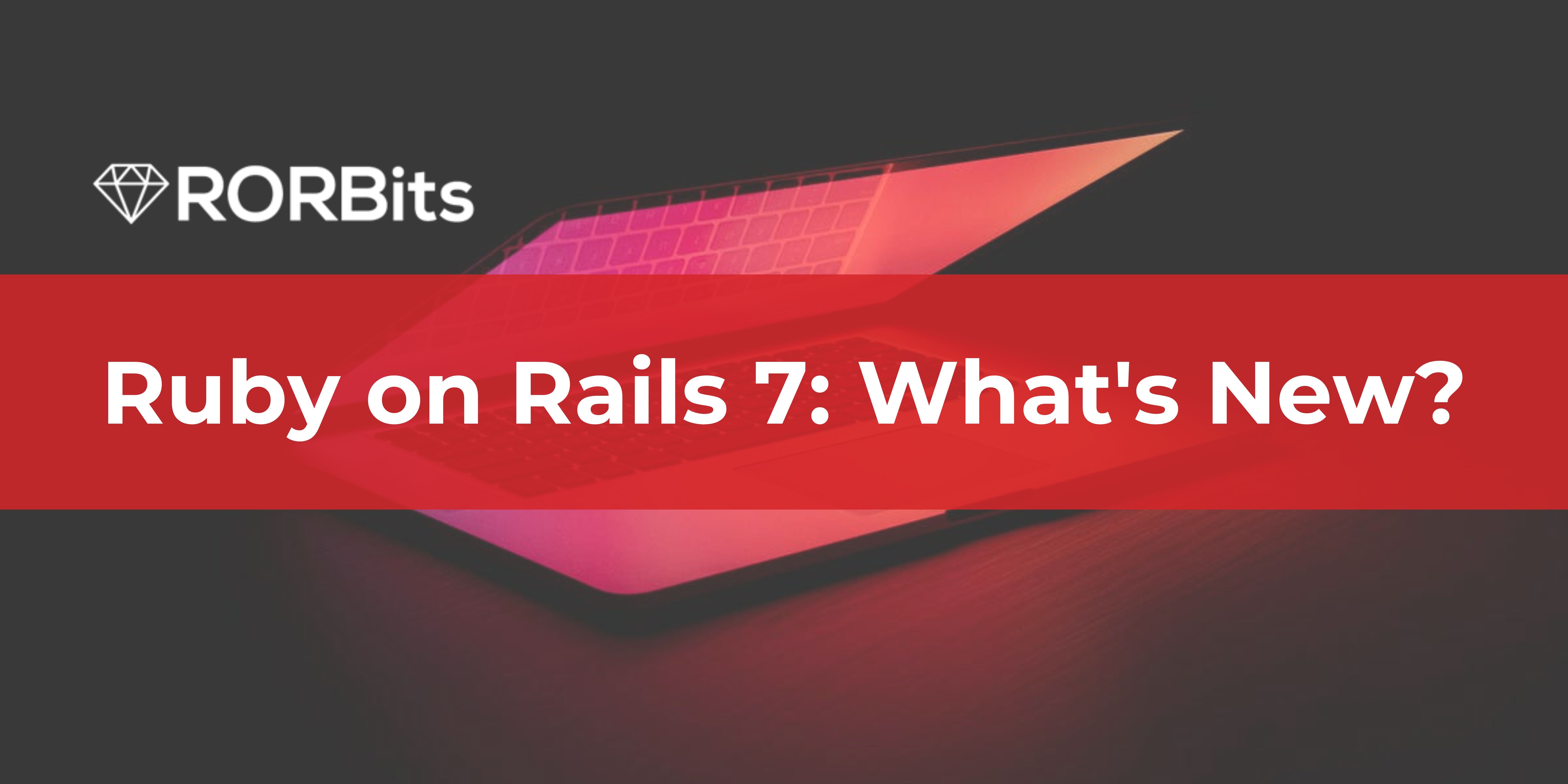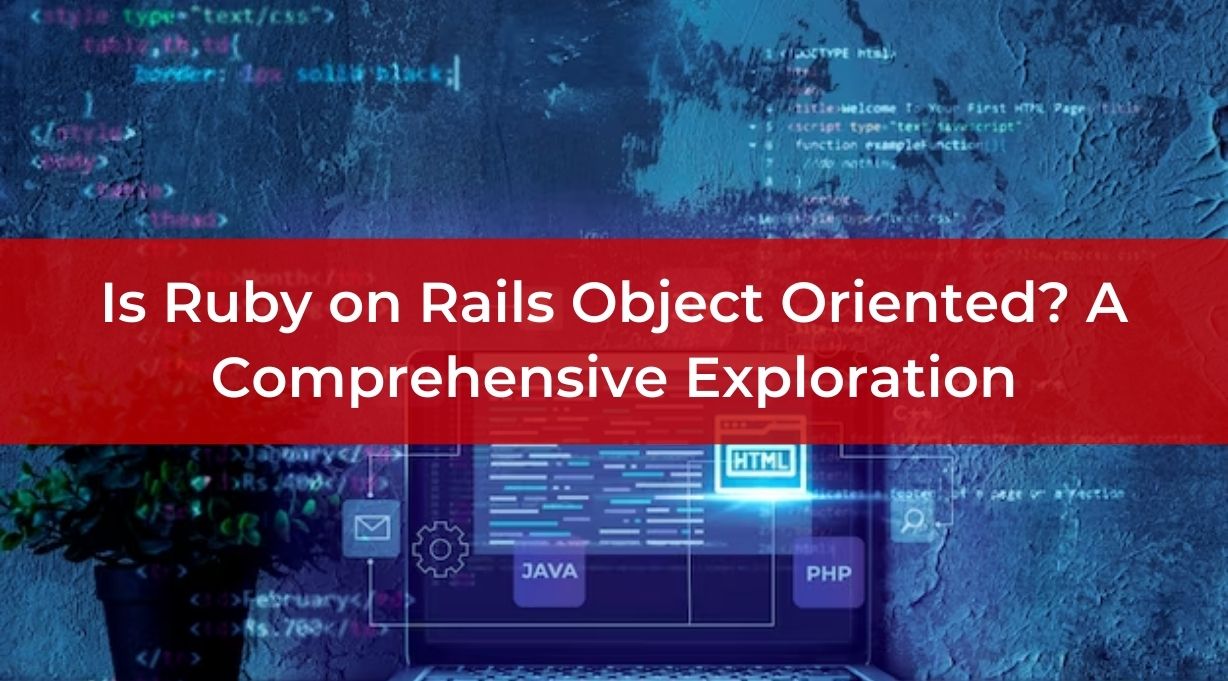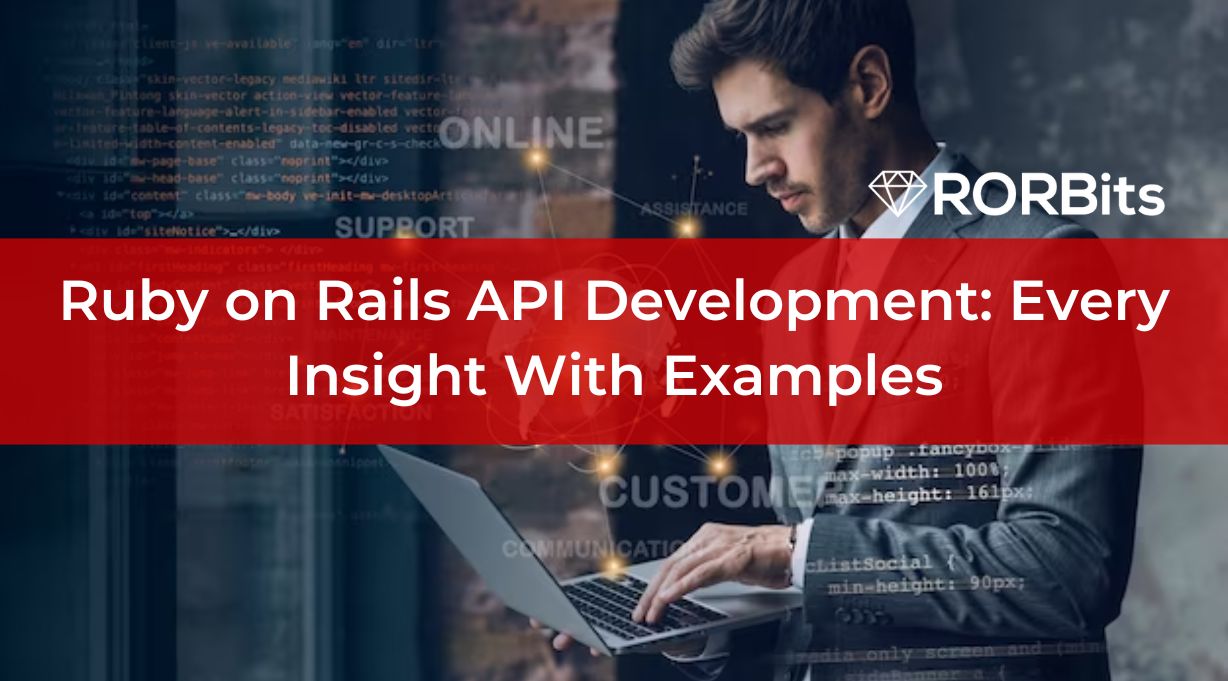In the world of web development, speed, consistency, and ease of deployment are paramount.
Ruby on Rails, a popular web application framework, offers developers an efficient and elegant way to build web applications.
However, deploying Rails applications can be challenging, especially when you need to ensure that the environment is consistent across different stages of development and production. This is where Docker and Dockerfiles come into play.
In this blog post, we will explore Dockerfiles for Ruby on Rails, understand their meaning, benefits, and delve into some practical use cases.
Let’s Start!!
What Is Rails?
Rails is also known as Ruby on Rails (ROR) which is a full-stack web framework written in Ruby programming language.

Rails can run into various operating systems such as Mac OS X, Windows and Linux.
A framework is comparable to Lego-like creation blocks. To build a custom web application, you can combine, match, and edit pre-built “Legos” of code provided by a framework rather than having to start from scratch.
Ruby on Rails framework is based on the Model-View-Controller (MVC) architecture (The most well-known pattern for app development) with a great toolkit having core features in concerns of frontend and backend.
The MVC pattern of Ruby on Rails is divided into three interconnected parts:
- Model is used to hold the data structure of the application.
- View is meant to represent the visual structure of the web app.
- Controller interconnects the data and view, and also runs business logic of the app.
This Ruby on Rails architecture pattern is the reason behind flexible Rails web applications.
The essential component of the Rails MVC design, Active Record, manages the model behaviour. For instance, the four CRUD operations—create, read, update, and delete—are implemented by Rails’ Active Record.
Various types of web applications prefer Ruby on Rails to develop complete web apps by front and back end development.
Key Features Offered By Rails
Automated testing
Because testing is embedded into Rails, test cases are simpler to create and run.
Scaffolding
This makes it simple to develop data management models, user-data interaction views, and model-view communication controllers.
Active Record
Rails operates under the premise that data access logic should be included as part of the object to instruct users on how to read and write to the database.
Persistent data and action that relies on it are carried by objects.
Rails Community
The developers of Rails frequently release updates and bug fixes to the community.
Convention over Configuration (COC)
Rails establishes a proper method for building apps that meet the majority of use cases, which is more crucial than providing configuration options for every scenario. To increase productivity, the framework makes decisions on your behalf.
If you want to get benefits of all these Ruby on Rails key features, then you should connect with Best Ruby on Rails Development Company like RORBits that leads you to positive outcomes of your ROR efforts.
Now, it’s time to know about docker and dockerfile.
What Is Docker?
Docker is a containerization platform that allows you to package applications and their dependencies into a single, portable container.

Containers are isolated, lightweight, and can run consistently across various environments, making it easier to develop, test, and deploy applications.
Key Features Offered By Docker
Packaging
Software’s capacity to be packaged into the reusable, transferable picture format.
Distribution
The capability to quickly distribute bundled software (images) to other machines and share them with others.
Runtime
The capability to reliably start, halt, resume, or terminate packaged programs.
Constructing the Infrastructure
Building virtual machines prepared to run Docker containers.
Orchestration and Scalability
Managing the distribution of software to a single Docker node or across a whole cluster.
What Is A Dockerfile?
A Dockerfile is a script used to build a Docker container image. It contains a set of instructions that specify how the image should be constructed.
These instructions can include things like copying files, installing packages, setting environment variables, and defining the entry point for the container.
Benefits Of Using A Dockerfile For Ruby on Rails
Now that we’ve covered the basics of Dockerfiles, let’s explore the benefits of using them for Ruby on Rails applications:
Isolation
Docker containers provide isolation, ensuring that your Rails application runs consistently, regardless of the host environment. This means fewer “it works on my machine” issues.
Portability
Docker containers can be easily moved between different environments, making it straightforward to deploy your Rails app to various platforms, including development, testing, and production servers.
Reproducibility
Dockerfiles allow you to document and version the environment setup for your Rails application.
This makes it easier to recreate the same environment for other team members or when scaling your application.
Efficient Resource Management
Docker containers are small and use the kernel of the host operating system.
This means you can run multiple containers on a single host without significant overhead.
Security
Containers are isolated from each other, enhancing security by reducing the attack surface area.
You can also control network access and permissions for each container.
Dockerizing a Ruby on Rails Application: Quick Steps
Dockerizing a Ruby on Rails application involves creating a Dockerfile that describes how to set up the environment for your Rails app within a container.
If you are feeling troubled in Ruby on Rails development and want to Hire Ruby on Rails Developer who is an expert in ROR and has multiple years of experience, RORBits is your one-stop solution. Must visit their website for ROR solutions.
Here are the key steps to create a Dockerfile for a Ruby on Rails application:
Choose a base image
Start by selecting a base image that provides the operating system and any necessary dependencies for your Rails application.
A common choice is an image based on a Linux distribution like Ubuntu or Alpine Linux.
Install Ruby
Use the Dockerfile to specify the installation of Ruby and any required RubyGems (Ruby libraries) using a package manager like apt for Ubuntu-based images or apk for Alpine Linux-based images.
Install Rails
Install the Ruby on Rails framework via the gem command.
Copy application files
Copy your Rails application code into the container using the COPY instruction in the Dockerfile.
Set up environment variables
Define any environment variables that your Rails application relies on, such as database configuration.
Install application dependencies
Use the bundle install command to install the required Ruby gems specified in your Rails application’s Gemfile.
Expose ports
If your application uses a web server like Puma or Unicorn, you’ll need to expose the port it listens on in the Dockerfile.
Define the entry point
Indicate the command that needs to be run when the container launches. Typically, this involves starting your Rails application server.
Let’s understand Dockerizing Ruby on Rails applications with use cases.
Creating A Ruby on Rails App
Use the command shown below to create a rails app.
mkdir ~/projects/noteapp
cd ~/projects/noteapp
Prerequisites: Dockerize Rails App
To implement Docker Compose, ensure the following installations:
Install Docker Community Edition
Install Docker Compose
Dockerfile Creation
Any Dockerize Ruby on Rails app is built upon the Dockerfile. It includes all of the directions needed to build the application image.
Installing Ruby and all of its dependencies will enable you to set this up. The following instructions are included in the Dockerfile.
// Dockerfile
FROM ruby:2.3.0
RUN apt-get update -qq && apt-get install -y build-essential libpq-dev nodejs
RUN mkdir /noteapp
WORKDIR /noteapp
ADD Gemfile /noteapp/Gemfile
ADD Gemfile.lock /noteapp/Gemfile.lock
RUN bundle install
ADD . /noteapp
Dockerfile will create a container containing Bundler, Ruby, and other dependencies while keeping the app code inside an image.
Use the command touch Dockerfile to create a new Dockerfile in the application’s root directory, and then add the contents of the aforementioned Dockerfile to it.
Explanation
- FROM ruby:2.3.0 : This command tells Docker to use the prebuilt Ruby image. There are multiple options, but this command means to use the ruby:2.3.0 image only.
- RUN : To install different software pieces with Apt, RUN command is used.
- WORKDIR : It states the base directory from where all the commands are performed.
- ADD : To copy files in our container from the host machine ADD command is used.
Gemfile Creation
Now, To create a bootstrap gemfile that loads Rails, Open the editor.
// gemfile
source ‘https://rubygems.org’
gem ‘rails’, ‘~>5.0.0’
To develop our Dockerfile, create an empty Gemfile.lock file.
touch Gemfile.lock
Dockerize your Rails application to increase portability, modularity, and scalability with RORBits. Hire Ruby on Rails Developers from us to get result-oriented development.
Using Docker Compose, Define Services
Now, this one is the most important section in the Dockerfile concept. All the services you need for your app consist in the docker-compose.yml file, to access each other’s Docket image, and the config to connect them and make them visible on port.
// docker-compose.yml
version: ‘2’
services:
db:
image: mysql:5.7
restart: always
environment:
MYSQL_ROOT_PASSWORD: password
MYSQL_DATABASE: noteapp
MYSQL_USER: appuser
MYSQL_PASSWORD: password
ports:
– “3307:3306”
app:
build: .
command: bundle exec rails s -p 3000 -b ‘0.0.0.0’
volumes:
– “.:/noteapp”
ports:
– “3001:3000”
depends_on
– db
links:
– db
Project Building
With the help of docker-compose run, we are going to build the skeleton of the Rails application.
docker-compose run app rails new . –force –database=mysql
compose : creates the app service image, which we must specify in our docker-compose.yml file.
runs rails new : It launches the app within a new container using that image.
database=mysql : This command defined the database.
Upon successful completion of the command, your application ought to be generated. Using ls -l, display the files
Database Connection
As Rails requires a database to be operating on the localhost, we will connect the database in this phase. We will also change the database and username to match the MySQL image defaults.
The first time we run the docker-compose command, a database container will be created that downloads the MySQL database image and builds a database based on the environment variables specified in the docker-compose.yml file.
We have already constructed an app structure and a database container. To set the configurations from the environment variables, we must update the config/database.yml file.
Replace the following with the information in config/database.yml :
// docker-compose.yml
version: ‘2’
services:
db:
image: mysql:5.7
restart: always
environment:
MYSQL_ROOT_PASSWORD: password
MYSQL_DATABASE: noteapp
MYSQL_USER: appuser
MYSQL_PASSWORD: password
ports:
– “3307:3306”
app:
build: .
command: bundle exec rails s -p 3000 -b ‘0.0.0.0’
volumes:
– “.:/noteapp”
ports:
– “3001:3000”
depends_on:
– db
links:
– db
environment :
DB_USER: root
DB_NAME: noteapp
DB_PASSWORD: password
DB_HOST: db
Run the docker-compose build command after configuring the docker-compose.yml to create an app image and install all necessary gems.
Run the command shown below to create a database.
docker-compose run –rm app rake db:migrate
Let’s perform a docker-compose up to start the app and database services before generating any migrations or models, and then boot the application after making the necessary modifications to database.yml.
After the command is properly run, we can see that rails is running on port 3000 in the container. We won’t be able to access it through the browser because that isn’t the port on the host. Since we exposed the port on localhost from 3000 to 3001 using docker-compose, it should be accessible via localhost:3001.
Once the app finishes running in the browser, use these commands in a separate console in the project directory to create a model and execute the migration.
docker-compose run –rm app rails g scaffold note title body:text
docker-compose run –rm app rake db:migrate
We can now perform operations on the application by accessing it at localhost:3001/notes on port 3001.
Practical Use Cases for Dockerizing Ruby on Rails Applications
Here are some real-world scenarios where Dockerfiles for Ruby on Rails shine:
Development Environments
Dockerized development environments ensure that all team members are working with the same setup, reducing configuration-related issues and speeding up onboarding.
Continuous Integration (CI)
You can often use Docker containers in CI/CD pipelines to consistently build, test, and deploy Rails applications.
Scaling
When your Rails application needs to scale horizontally, you can quickly spin up additional containers to handle increased traffic.
Multi-Service Applications
If your application includes multiple services (e.g., a Rails API server and a separate database), you can use Docker Compose to define and manage the interaction between these services.
Production Deployment
Docker simplifies deploying Rails applications to production servers. You can use orchestration tools like Kubernetes or Docker Swarm to manage containerized applications at scale.
Conclusion
Dockerfiles for Ruby on Rails provide a powerful way to encapsulate your application and its dependencies, making it easier to develop, test, and deploy Rails applications consistently across different environments.
By containerizing your Rails app, you gain the benefits of isolation, portability, reproducibility, efficient resource management, and enhanced security.
Whether you’re building a small personal project or a large-scale production application, using Dockerfiles for Ruby on Rails can streamline your development and deployment processes, ultimately saving time and reducing headaches for your development team. So, give it a try and experience the advantages of containerization for yourself!
For more guidance related to Ruby on Rails development, you should connect with Ruby on Rails Consulting Service Providers like RORBits. They will assist you to hire ROR developers and give you better suggestions for Ruby on Rails development.




